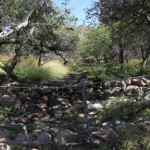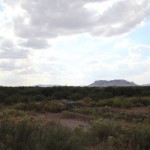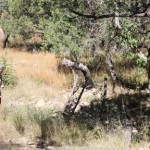Learning in dialog with scientists, conservationists, naturalists, astronomers, activists, and artists at the Biosphere 2, The Institute of the Environment, and Cuenca Los Ojos was an exercise in interweaving uncertainty and hope. At the Biosphere in discussion with scientist Sujith Ravi, the challenges facing the southwestern grasslands were enumerated thoroughly. Water usage changes, desertification, drought, invasive species, rising temperatures–all the data presented a bleak and uncompromising picture. At The Institute of the Environment in discussion with Dr. Jonathan Overpeck, the frustrations of scientists who feel misunderstood and suppressed were emphasized. Climate change is here, policy is not changing, behavior is changing too slowly, and the mechanisms of capitalism in service of endless growth work against the needs of climate recovery.
Its hard to make artwork in the face of these questions. Complex, abstract reams of undifferentiated data about the future lack a felt reality. The timescales are long and the sweep of effects broad, but it is in looking at the shorter timescales and local experiences that the abstract becomes real. Those local discussions were riveting and even hopeful, whether learning of the work of how to fight the disastrous effects of the invasive species Buffel Grass as it spreads rapidly through Tucson and surrounding areas, so clearly shown by Lindy A. Brigham, Executive Director of the Southern Arizona Buffelgrass Coordination Center, or Valer Austin’s determined remediation of desertified land to restore biodiversity in the Chihuahuan Desert on her ranch Cuenca Los Ojos.
The Art Lab Biosphere project provided an incredible, rich, and surprising experience for discovering the key questions around climate change in the Southwest, challenges in working across the studio and the laboratory, and the importance of dialog and connectivity in research and community. My project, Avian Field Stations, has a new research focus: grasslands birds in the Cuenca Los Ojos area. I look forward to returning to Tucson and the Chihuahuan desert in the early summer to conduct field research, develop alliances with researchers, and test prototype works.



